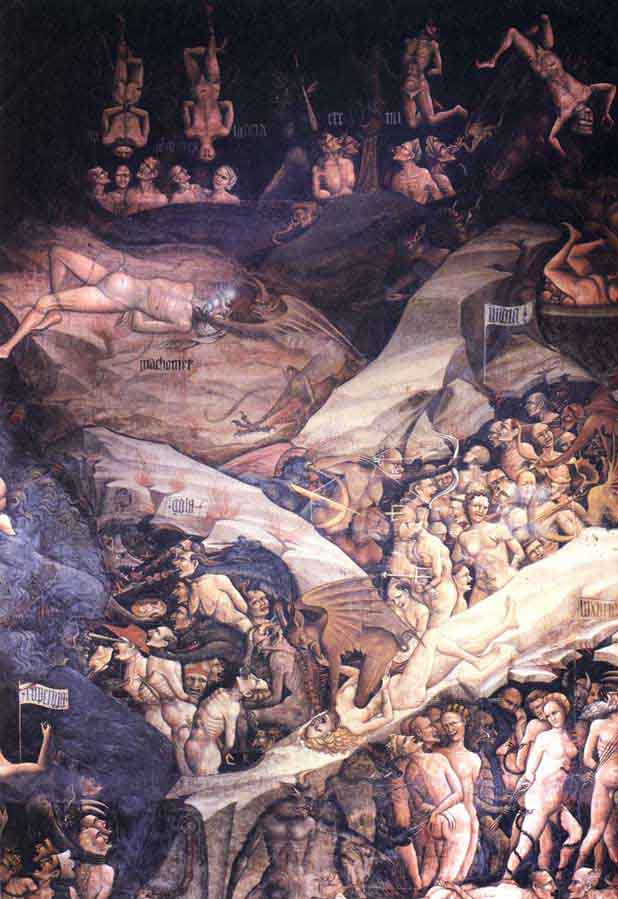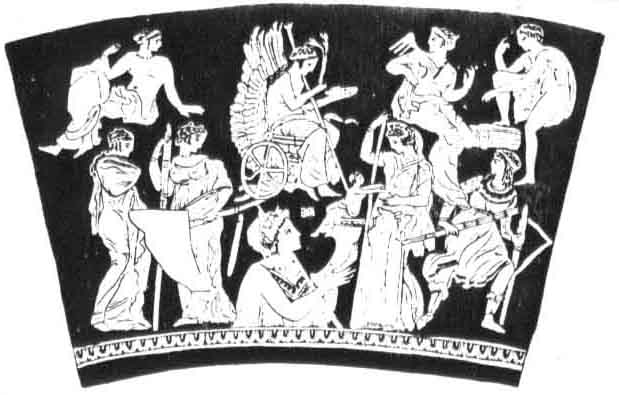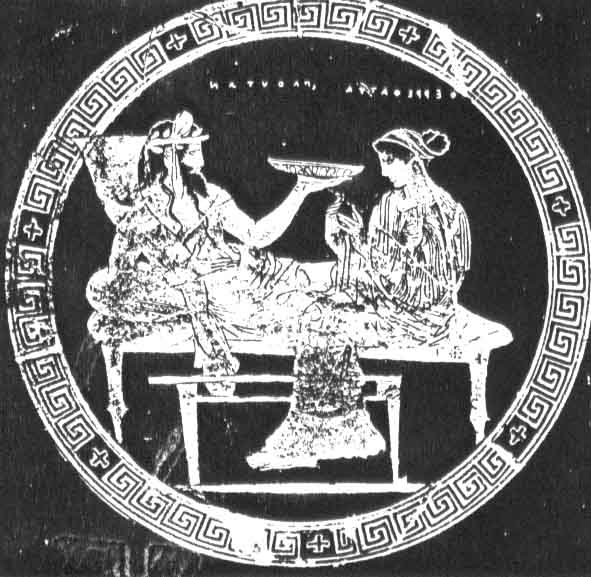Department of Classics,
University of Texas at Austin
Prof. Lawrence Kim
I. Names to Remember
Cerberus, Charon, Tantalus, Sisyphus, Danaids, Minos
River Styx, River Lethe, Elysian Fields, Tartarus
Orpheus, Eurydice, Thrace, Lesbos
II. Lecture Outline
- The Underworld and Its Inhabitants
- The King: Hades/Pluto
- The Queen: Persephone/Proserpina
- The Judges: Minos, Rhadamanthys, and Aeacus
- The Furies, or, the Erinyes
- The Watchdog: Cerberus, the Three-Headed Dog
- The Rivers: Styx (Hatred), Acheron (Sorrow), Cocytus (Wailing), Phlegethon (Burning), Lethe (Forgetfulness)
- The Ferryman: Charon
- Requires payment
- Takes souls across the River (Styx or Acheron)into Hades' realm
- Other Places in the Underworld
- Elysium, or the Elysian Fields (Champs d' Elysee)
- Also Known as the "Islands of the Blessed"
- The Ghosts and Souls of Heroes
- Tartarus
- Prison of the Titans and the Great Sinners
- Dark Region far beneath Hades
- Elysium, or the Elysian Fields (Champs d' Elysee)
- The Sufferers of the Underworld
- Tantalus: Fed his son Pelops to the Gods
- Cannot reach food and drink
- Sisyphus: Outwitted the Gods, Put Death in Chains
- Forever Rolling Rock uphill
- Tityus: Attempted to rape Leto, mother of Apollo & Artemis
- Vulture picks at his liver eternally
- Ixion: Attempted to rape Hera
- Tied to a slowly turning flaming wheel
- Danaïds
- Try to fill a tub by using vases full of holes
- Tantalus: Fed his son Pelops to the Gods
- Orpheus
- Orpheus the Musician (Lyre)
- Charms the Trees, Stones, Beasts
- Metaphor for the Artist and Poet
- Orpheus the Argonaut
- Overcomes the Siren's Song
- Provided Rhythm for the Oarsmen
- Orpheus and Eurydice
- His wife, Eurydice, dies, bitten by a snake
- He Visits the Underworld to get her back
- Don't Look Down/Back!
- Orpheus' Death
- Distraught over Eurydice
- Spurns women, turns to boys
- Torn Limb from Limb by angry Thracian women
- Orpheus' Head
- Floats to Lesbos, still singing
- Apollo commands it to be silent
- Modern Film Versions
- Jean Cocteau, Orpheus (L'Orphée) (1950)
- Marcel Camus, Black Orpheus (L'Orfeu Negre) (1960)
- Orpheus the Musician (Lyre)
III. Images
Orpheus
- Orpheus. Marcello Provenzale, 1608. Galleria di Villa Borghese, Rome.
- Orpheus Leading Eurydice. Camille Corot, 1861. Museum of Fine Arts, Houston.
- Nymphs Finding the Head of Orpheus. J.W. Waterhouse, 1900. Private collection.
- Orpheus. Gustave Moreau, 1865. Muse d'Orsay, Paris
- Death of Orpheus. Attic Red-Figure Stamnos, by Hermonax, c. 470-450 BCE. Muse du Louvre, Paris
- Orpheus, Eurydice, Hermes. Relief Sculpture, c. Museo Archeologico Nazionale, Naples. (From L to R: Hermes, Eurydice, Orpheus)
Underworld
- Sisyphus. Franz von Stuck, 1920.
- Charon Crossing the Styx. Joachim Patenier, 1515-24. Museo del Prado, Madrid.
- Charon and Hermes. White ground lekythos, c. 450 BCE. National Archaeological Museum, Athens.
- Herakles brings Cerberus to Eurystheus (hiding in a pithos). Caeretan hydria, c. 530. Muse du Louvre, Paris.


